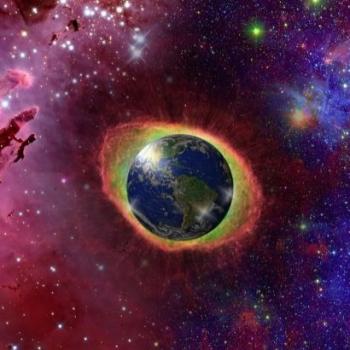At sunset, when the next day begins, torches are lit, and because the Greeks used a 7/8 rhythm (or something similar) for a procession, it turns into a torchlit dance. They proceed not directly into Eleusis, but instead down to the beach, where there is a ritual concerning Aphrodite. (Perhaps this is where the scene of her rising from the sea belongs. Anyway, this is why at this point in our NROOGD Commemoration, we have the Priestess of Demeter take a skyclad dip in the surf.) Here the mustai are sworn to secrecy by having the Hierophant’s key placed upon their lips (see Sophocles, OEdipus at Colonus, 1045-53; Pausanius, Elis, 1.20.3). The torchlit procession then winds up from the beach and into Eleusis proper. (The use of torches for nocturnal processions was no secret; and the “torchlit search for Kore,” as in, e.g., Lactantius, Divine Institutes, 1.21, was probably an allegorical interpretation of this procession.)
One of the first events within the sacred grounds of Eleusis is probably a women’s dance around the Kallichoron, the “well of fair dances,” where Demeter sat and mourned. Next is the Kernophoria, the offering of first fruits carried in the traditional kernos (a vase with multiple chambers), in the small temples of Demeter, Persephone, and Ploutos in the Eleusinian precinct. (Offerings to chthonian deities were normally carried out at or after sunset. Here Psellos’s second icon fits: torches because it was night; drums and cymbals as both musical instruments for the procession and vessels to pour the offering, in the form of a pelanos.) Then everyone settles down for a good night’s sleep. Well, maybe the teenagers didn’t.








